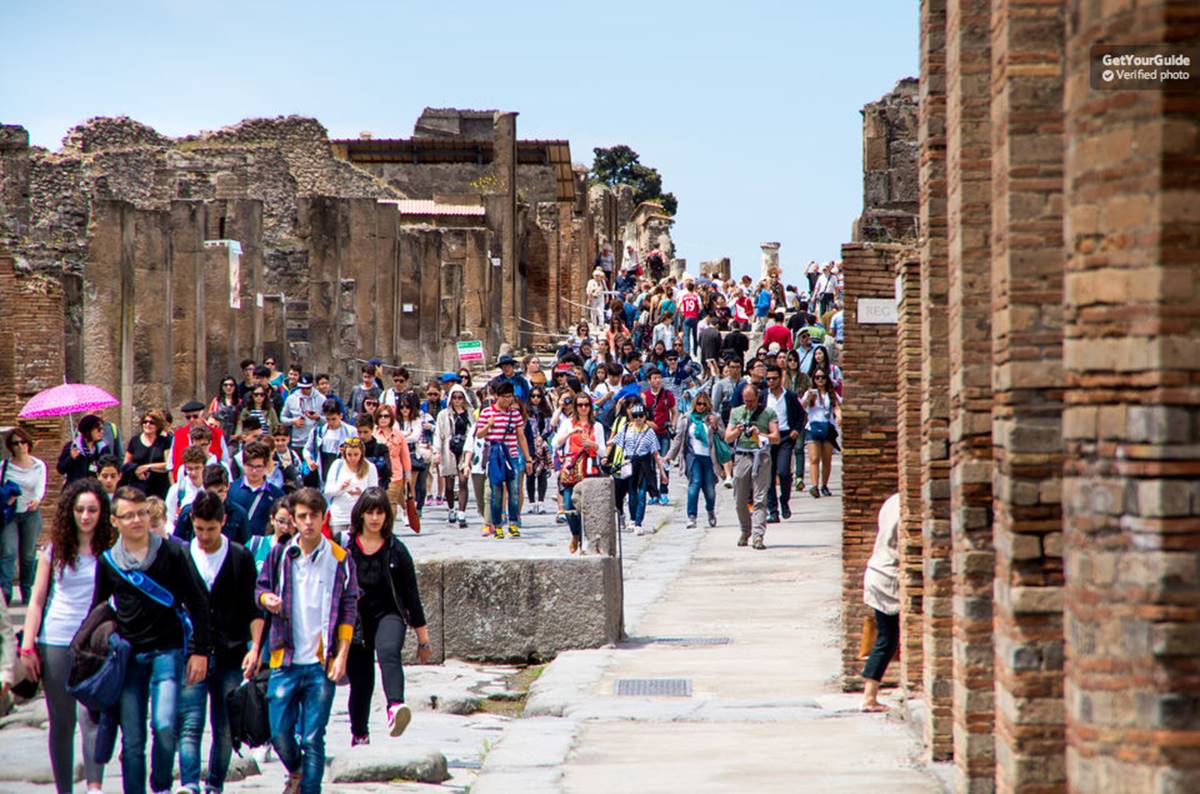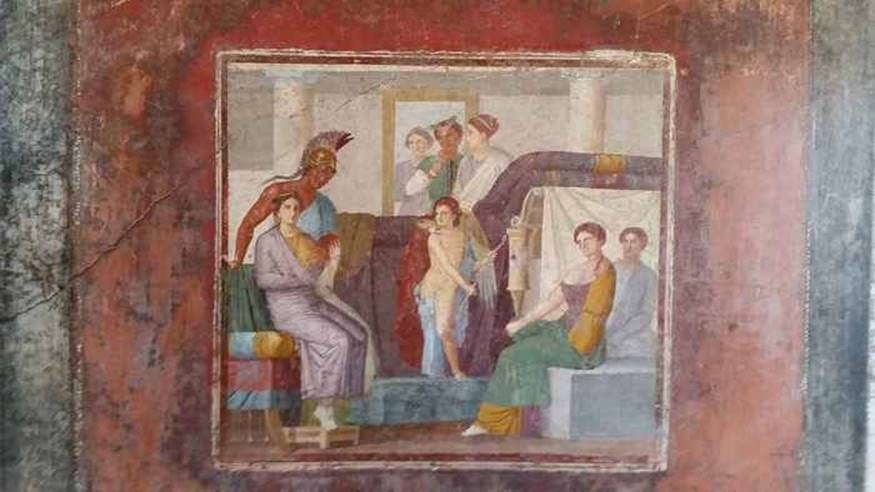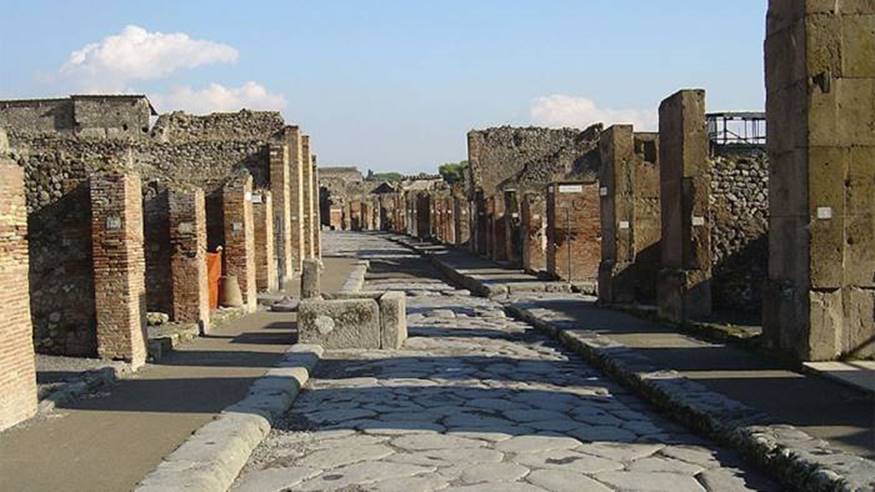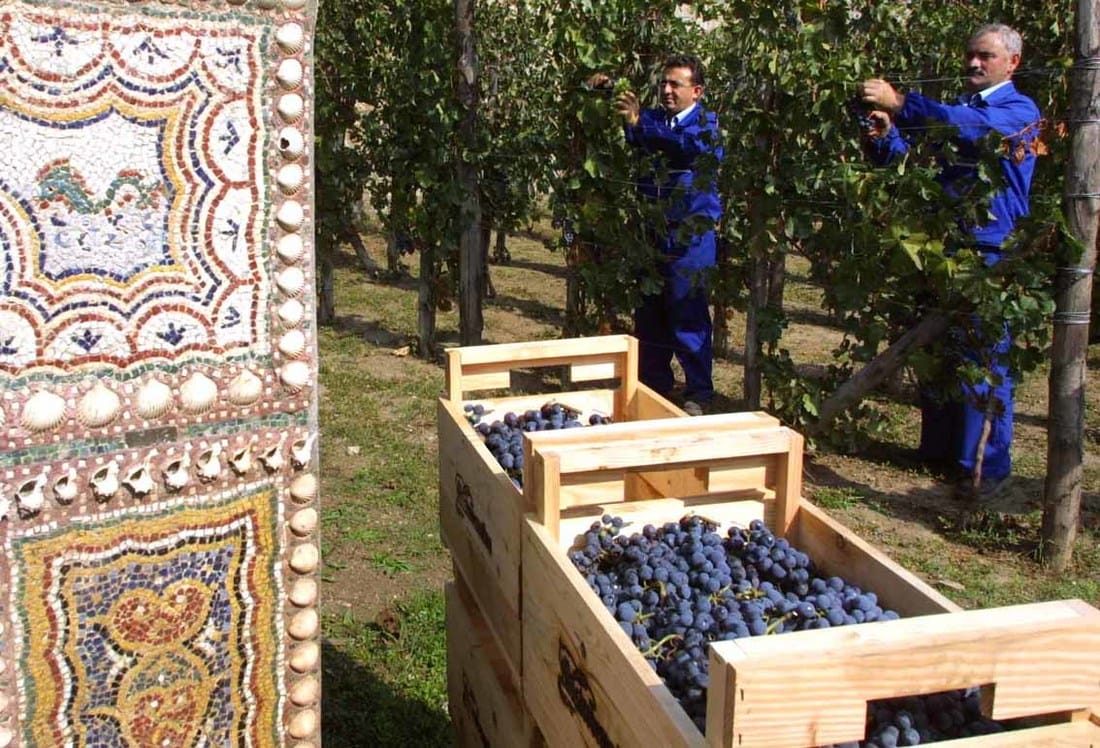|
Topping the list of the best things happening to the city of Pompeii in 2016 there certainly is the new record of visitors of the archaeological excavations. This is confirmed by the more than 3 million 200 thousand tourists, who were left enchanted by the ancient wonders of the old town last year. About 15% more compared to about 2 million 900 thousand tourists in 2015, an impressive data. To repeat and emphasize this goal with great pride and amazement there was the Archaeological Superintendent Massimo Osanna during the opening ceremony of the House of the Vettii, which was also attended by the newly designated Italian Prime Minister Gentiloni and the Minister of Culture and Tourism, Dario Franceschini. It was Gentiloni himself, then, to underline the global importance of the tourist heritage of the city of Pompeii, which hides a great potential but "also with a very high margin of improvement." The city of Pompeii, in fact, is already preparing for the new year. One of the most important projects which is surely on the top of the list of things to do is a new railway hub.
This project has caused much discussion in the new town, which determined a deep split within the traders. The growth factors in determining visits have been so many, this year. What is certain is that the numerous exhibitions held over the months (for example, the one called “Egypt, Pompeii”, the 30 sculptures by the Polish artist Igor Mitoraj, the exhibition about Pink Floyd’s “Live in Pompeii” and one called "The body of the crime", etc.) have contributed much to launch the lovely image of ancient Pompeii in the world across the Italian board. Moreover, the prestigious music concerts which took place this summer helped the ruins to show that it is still a “living place”. Two were the names that have drawn, like a magnet with an increasingly strong magnetic power, tourists from around the world: Elton John and David Gilmour. The concerts of the two British artists were sold out on both the occasions. Then again, even the exhibitions of archaeological finds of Pompeii shown in the museums all around the world helped the site to increase its prestige. In short, a 2016 to be framed for the Archaeological Superintendence of Pompeii. For New Year’s Day the site had a high amount of visitors. The special opening of the first of January and the coincidence with the free admittance of the "Sunday at the Museum", put the archaeological site of Pompeii in the leading positions among the most visited places of art in January 2017. Now tourists can also do an exhaustive and exciting erotic tour of Pompeii, including the frescoes of the brothel, the small brothel, better known as the Lupanariello, the Suburban Baths and the “House of the Vettii". There were, in fact, around 25,000 tourists visiting the site. According to the Superintendence, the “House of the Vettii” was the most visited attraction: it is the dream of all the tourists with its famous erotic representations.
0 Comments
Today, to wear a fresh and particular fragrance is the hallmark of seduction and refinement, and this practice was particularly dear even to the ancients; but what is little known is that in ancient times perfume was used to cover the odors resulting from poor personal hygiene and that the essences were used in therapeutic preparations to cure some diseases.
The author Pliny the Elder attributed the invention of the perfume to the Medes, Middle East people of magicians and scientists, and it is said, according to the tradition, that the perfume was introduced in Italy by the Etruscans. But today we know that the import centers had to be different because of the commercial importance that the colonies of Great Greece took regarding the import of exotic goods. If, initially, to cover the odor with odorous substances could be for hygienic reasons, over time it became the subject of luxury ostentatious, as to be banned for "moral" reasons by the Romans. Economic factors banned the import of spices in the second century BC. According to the Roman moral code they were ephemeral goods and unnecessarily expensive, used in personal care of the body at the spa, in the gymnasiums and during other special occasions. Widespread was the custom, between the richest people, to throw rose petals at banquets to impress guests or, during theater performances, perfuming canopies with essence of rose water. The use of perfume was widespread in the empire especially thanks to the glass with which were made all the containers, and, in this way, the production of industrial balm and ointment contributed to lower its production costs. Peculiarity that is still true today: the more valuable was the substance and the particular shape of the container, the more higher were the production costs. To avoid the deterioration of the glass containers they were stored inside additional metal containers and this would seem to be confirmed by the presence of malachite and azurite, substances caused by the alteration of bronze, on the outside wall of an ancient Pompeian ointment. Pompeii was also famous for the art of the perfume. As archaeological evidence has revealed, significant was the commercial activity linked to perfumes and ointment exported to distant countries. In the excavations of 1750 were found numerous accounts of the use and manufacture of perfumes in the Vesuvian area, so that these activities were imprinted on some paintings of the House of the Vettii. In the fresco wall of this house are depicted some cupids while doing activities such as the preparation of perfumes, the maceration of the essences and the sale of the final product to the public. Today, for further studies of form and content, archaeologists tend to not empty the containers, thus allowing you to discover curiosities of activity still little known as the art of perfume in the Vesuvian cities. Come see with your eyes how beautiful Pompeii is and book a time-traveling tour through ancient Pompeii with us! Fifty thousand square meters of excavations that have been previously closed has been returned to visitors, including a small brothel, the house of Obellius Firmus and the house of Marcus Lucretius Fronto. Pompeii will complete 2016 not only with a huge increase of the amount of visitors that will reach later this year the number of 3.2 million, but also with the re-opening record in a single year. On Wednesday the 7th of December it also was the turn of an unpublished excavation of a totally hidden from the soil area, in addition to the Regio V and IX reopened after the completion of the work of putting in safety interventions thanks to the Great Project Pompeii. The director of the Superintendence Massimo Osanna and the general manager of the Great Pompeii Project Luigi Curatoli, showed a new path available for tours and illustrated the work carried out. The house of Obellius Firmus in Regio IX is one of the main attractions. It was not inhabited at the time of the eruption for the death of the owner: his name is painted on the outside walls and on the walls of the house in front of it near some electoral inscriptions. M. Obellius Firmus died before 79 A.D. and his tomb was found at Porta di Nola. In Regio V tourists now can visit the house of Marcus Lucretius Fronto, where they can find some of the finest ancient Pompeii wall paintings. M. Lucretius Fronto was a member of one of the most prominent families of the Roman city; he arrived here in the Augustan age. This house was also being restored at the time of the eruption of Vesuvius that destroyed Pompeii, Herculaneum and Stabiae in 79 AD. It has many frescoes with scenes of landscape, garden and animals. The owner was a Pompeian politician, his house was one of the most beautiful in the city, with frescoed rooms and very beautiful paintings, that allow visitors to fully appreciate how the houses of rich Romans were decorated, although located in the province. In one of the rooms there were found the skeletons of five adults and three children killed by the collapse of the roof during the eruption. The domus of Marcus Lucretius Fronto was already partly open (only for groups) at Easter 2014. The third main attraction for visitors is the Small Lupanare (called 'Lupanariello') restored within a building that was probably a place where prostitution was practiced. Four erotic frescoes reveal the nature of the meetings that were held in that space, which had been sealed inside the window to ensure privacy to customers. Finally, from cleaning done by archaeologists in the Regio IX, insula 3, it was found an excavation already used by Pompeii as a kind of 'dump' of building materials. It was found by Giuseppe Fiorelli and left during his excavations in mid 1800. Today, thanks to the restoration of the Great Pompeii Project, has brought to light the floor in signinum of a dwelling probably abandoned after the earthquake of 62 A.D. Join us on a special guided tour of Pompeii. View and book your tour here. From the 2nd of December the ruins of Pompeii definitely come to be part of those places where everyone can enter and move without architectural barriers. It was not by chance called "Pompeii for all", an intervention implemented with the Great Pompeii Project and outlining accessibility routes and overcoming obstacles that until a few months ago made it, in fact, inaccessible to certain roads and Roman houses to anyone with walking difficulties: not only to the disabled, but also mothers with strollers, elderly and injured people.
Now visitors can easily and without architectural barriers walk through the archaeological site of Pompeii from the entrance of Porta Marina Amphitheatre, strolling along Via dell’Abbondanza, with access to the most interesting houses and most significant buildings of the site, reaching a total of twenty monuments. The Minister of Cultural and Tourism, Mr. Dario Franceschini, on the eve of the European Day for the rights of disabled persons, inaugurated "Pompeii for All", the largest facilitated itinerary of the visit to an archaeological area in Italy. The route was shown by the Director of the Great Pompeii Project, Luigi Curatoli, and the general manager of the Superintendence of Pompeii, Massimo Osanna. All the 3 kilometers are safely passable by people in wheelchairs, mothers with children, elderly, people with stick, but also by the blind and visually impaired people. At the official opening of the route, actually already partially passable since last September, there were some associations for the promotion and defense of the rights of disabled persons. These interventions will give the opportunity to move in the Roman city overcoming differences in height and sidewalks thanks to a new beat realized on the sidewalks and in open areas. A series of steel ramps will allow access to the complex of Julia Felix, the House of Venus in the Shell, the house of Octavius Quartio, reopened in March, or the houses of the Ephebus, the Criptoportico and the house of Sacerdos Amandus, reopened in December 2015. Then, the path will lead to the Garden of the Fugitives, the House of the Faun, the House of Castor, up to the tower which closes the path of Mercury. The route also leads to the Forum, with the ability to go through a large part of the portico of the Basilica to the Temple of Venus. A pool of experts (engineers, architects, archaeologists) appropriately identified the most suitable technical solutions for the safety of the areas involved and therefore in the creation of such routes, considering the best environmental impact compatible with the site. The integration activities in some parts are based on the functional requirements of use in full compliance with the principles of restoration and intervention in archaeological areas. Modern materials (mixture of hydraulic concrete free from cements) reversible and removable at any time, have been used in areas with pavement distress and thus such as to create conditions of safety for visitors. In compliance with these criteria, the expertise of the interventions, the competence of the technicians and all the necessary approvals to the transactions are the best guarantee to any intervention on the cultural heritage of Pompeii. Come join on a journey to the past and experience Pompeii with a expert licensed guide + the use of virtual reality (VR) headsets to bring the past to life. View and book your guided Pompeii tour right here! Last October in Pompeii it took place, in the presence of journalists and tourists, the traditional cutting of the grapes in the vineyards of the House of the Summer Triclinium. At the event it was opened to the public also the beautiful Foro Boario vineyard.
The project was born as an experiment in 1994 on a limited area of the ruins, thanks to an agreement between the Superintendent and the winery Mastroberardino that, in addition to taking care of the vineyards, It produces the prized Villa of Mysteries wine, made with two different varieties of grapes named Piedirosso and Sciascinoso. It has unique features as it realized according to the viticulture techniques of two thousand years ago. In addition to being an excellent wine, the Villa of the Mysteries wine is a way to tell and make known Pompeii with its culture and its ancient tradition. Today, however, the affected areas dedicated to the harvesting grapes include all the vineyards of Regiones I and II of the ancient Pompeii, for an extension of more than one hectare, spread over 15 plots with a potential yield of about 30 tons of grapes. This area can produce an amount of about 1800 bottles a year (mostly already booked by the more prestigious restaurants in the world) that on the market they may also get a cost of € 200 each. Since 2007, it was also launched the production of another excellent red wine called Aglianico. Also, during the event in the ruins of Pompeii, some official guides have entertained guests with ancient tales. Thanks to the letters of Pliny the Elder, the guides told to their guests that the ancient Romans mixed the wine, they did not drink it pure: adding honey it became a mixture called "mulsum" while adding resin it became "resinous" wine. But Pliny the Elder tells us also that the most expensive wine , besides the Falernum, was the Greek wine, coming from Kos. And Pliny also tells us that one slave quaffed the wine when the owner was not there and then he filled again the amphora until the brim with salt water: the slave managed to create a unique blend and this new kind of wine became very expensive. So, thanks to the Great Pompeii Project, the site is improving its offer organizing funny initiatives like the grape harvesting. But there is more! As we told in a previous article on our blog, within December there will be the additions of a number of newly opening domus in the Ancient Pompeii. The Regiones IV, V; VI and IX will be soon entirely opened and the roads will be completely accessible, giving the chance also to disables to visit Pompeii. The House of Siricus, near the Lupanare, will be soon ready to visit and the House of the Bear too, in the Regio VII. Moreover, by the end of the year, we will open other domus, such as the House of Marcus Lucretius Fronto and the House of Obellius Firmus. So, Christmas will be the best period to visit Pompeii! Take a tour of Pompeii with us and time travel to the past! Start by viewing our tours here. Or call our Pompeii office at +39 081 1877 7006. |
AuthorStaff at Flashback Journey to Pompeii. Our goal is to bring you up-to-date information on events, continuing archeological excavations and more on Pompeii. Archives
July 2018
Categories |






 RSS Feed
RSS Feed
